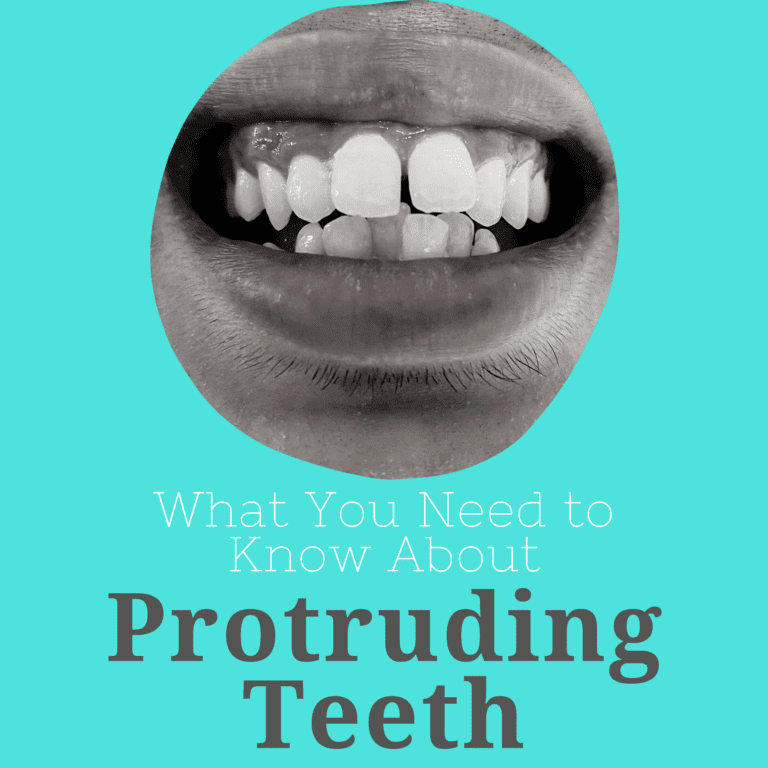What You Need to Know About Protruding Teeth

One common problem that orthodontists often see are teeth that stick out too far from the mouth.These protruding teeth, also sometimes referred to as buck teeth, can negatively affect the appearance and function of the teeth and jaw, depending on their severity. Some cases may be hardly noticeable, while others may be so severe that the upper teeth are almost permanently sticking out of the mouth. Protruding teeth in some individuals can be prevented by understanding the causes, however treatment options are also available for those who it has already affected.

What causes buck teeth?
Buck teeth are the result of a specific type of malocclusion known as an overbite. The term malocclusion refers to a misaligned bite, while the term overbite implies the upper jaw extends far beyond the lower jaw. Because of this extension, the top front teeth tend to flare forward out of the mouth. There are different causes of buck teeth, such as:
Genetics
Like everything else inherited from our parents, facial bone structure is directly affected by genetics. Therefore, if a parent or close relative has an overbite or protruding teeth, then it is likely that their child may inherit the same type of facial structure. It is especially important for people who are predisposed to schedule early orthodontic treatment to help decrease the severity of the problem while the bones are still growing.
A Tiny Upper Jaw
Another cause of protruding teeth is a tiny upper jaw that does not have enough space to accommodate the number of teeth trying to erupt. This can cause some of the teeth to become impacted in the jawbone, which can affect how the surrounding teeth erupt. Having a small upper jaw is also associated with overcrowding, which can cause some teeth to be pushed forward so that other teeth can erupt behind them.

Sucking on Fingers or Pacifiers
While this is a harmless habit practiced by infants, it can negatively affect the development of the teeth and jaw if it continues too long. Generally speaking, children past the age of 3 or 4 should no longer participate in these behaviors since the pressure of sucking causes permanent teeth to erupt at an angle. Constant sucking can also cause the upper jaw to flare outward and can contribute to an overbite.
Tongue Thrust
Tongue thrust is a condition that pushes the tongue too far forward in the mouth so that it is always pressing on the back of the front teeth. Since teeth grow in response to force, this constant pressure can cause the teeth to grow outward and can even cause open bites. Tongue thrust is caused by poor swallowing habits, allergies, swelling of the tonsils and adenoids, or tongue-tie.
How are protruding teeth treated?
Depending on the severity of the overbite and how far the teeth protrude from the mouth, treatment may be recommended by your orthodontist. Generally speaking, any case that affects your natural function will usually require some form of treatment. Both overbites and protruding teeth can cause difficulty chewing, speech impediments, breathing problems, pain, damage to the teeth and jaw, and can even increase the risk of dental trauma.
As such, your orthodontist will likely recommend treatment if your particular case is expected to cause those things. Overbites and protruding teeth can be treated using either Invisalign or traditional metal braces, however more severe cases may respond better to metal braces. In some cases, a palate expander may also be implemented in order to widen the upper jaw to alleviate protruding teeth due to overcrowding. Overall, only your orthodontist can provide you with an adequate treatment plan depending on your individual case.
 Dr. Massih attended UCLA, where she graduated Magna Cum Laude with a degree in psychobiology. She then went on to earn her DDS degree at UCLA’s School of Dentistry, where she was awarded the Dean’s Scholarship, and was in the top 10% of her class. She has received her certificate in Orthodontics and Dentofacial Orthopedics at the University of Pittsburgh and is a member of the American Association of Orthodontists, Pacific Coast Society of Orthodontists, & American Dental Association.
Dr. Massih attended UCLA, where she graduated Magna Cum Laude with a degree in psychobiology. She then went on to earn her DDS degree at UCLA’s School of Dentistry, where she was awarded the Dean’s Scholarship, and was in the top 10% of her class. She has received her certificate in Orthodontics and Dentofacial Orthopedics at the University of Pittsburgh and is a member of the American Association of Orthodontists, Pacific Coast Society of Orthodontists, & American Dental Association.

Recent Comments